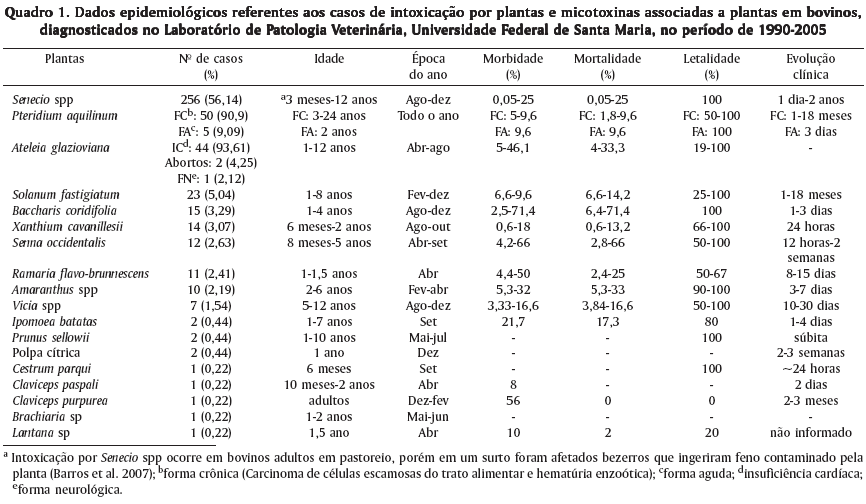From 1990 to 2005, tissues from 2,912 cattle necropsies were examined at the Laboratory of Veterinary Pathology (LPV) of the Federal University of Santa Maria (UFSM), Brazil. These tissues came from necropsies performed by faculty members of the LPV or were mailed-in samples from necropsy performed by veterinarian practitioners. In 461 (15.83%) of these necropsies the cause of death was attributed to the ingestion of poisonous plants. In decreasing order of frequency poisoning by the following plants were registered: Senecio spp (56.14%), Pteridium aquilinum (12.06%), Ateleia glazioviana (10.31%), Solanum fastigiatum (5.04%), Baccharis coridifolia (3.29%), Xanthium cavanillesii (3.07%), Senna occidentalis (2.63%), Ramaria flavo-brunnescens (2.41%), Amaranthus spp (2.19%), Vicia villosa (1.54%), Ipomoea batatas, Prunus sellowii, cytrus pulp (0.44% each), Cestrum parqui, Claviceps paspali, Claviceps purpurea, Brachiaria spp and Lantana sp (0.22% each). In a given outbreak the number of affected cattle was substantially higher than the number of necropsies performed. The following aspects are discussed for each plant: geographical distribution; factors inducing ingestion; morbidity, mortality and lethality rates, clinical signs, necropsy findings, histopathology. For those plants in which information on the active principle and pathogenesis are available, these aspects are included in the discussion.
Poisonous plants; epidemiology; cattle diseases



